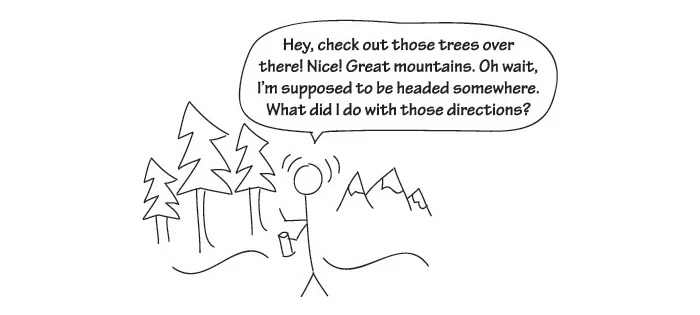The 21 Best Books on Instructional Design: Classics, Hidden Gems, and the Latest Bestsellers

Books may have lost the leading role in education, but they remain an invaluable source of unique and fundamental knowledge. We have collected the best instructional design books and some other books that don’t guide through the practice of instructional design directly but can be and are used to create eLearning experiences much more effectively:
- The classical books on instructional design
- Not-so-obvious books for instructional designers
- Latest instructional design bestsellers
Let’s get started.
The Classics
We don’t hesitate to call these books classics because they are most often mentioned by experienced course developers, company leaders, and eLearning pioneers – people who know both sides of instructional design: theory and practice. If you’ve just started in ID or want to deepen your knowledge, these books are exactly what you need.
1. Design for How People Learn (Voices That Matter), by Julie Dirksen
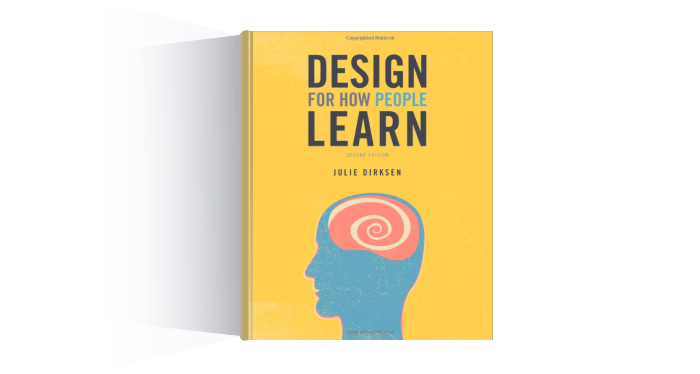
Perhaps all of us have had some useless learning experiences. A boring book, an endless article, or too much entertainment with too little information. Julie Dirksen wrote a book that helps to create online courses that both hook learners and educate them. Reading it, you’ll be able to find the golden mean between giving knowledge and provoking interest. And you’ll learn how to make people remember new information long after they’ve completed a course.
After reading it, you will:
- Find the golden mean between giving knowledge and provoking interest
- Learn how to make people remember new information long after they’ve completed a course
Example of a motivation gap in Design for How People Learn
Best for: both beginners and seasoned instructional designers aiming to increase learner engagement.
2. The Accidental Instructional Designer: Learning Design for the Digital Age, by Cammy Bean
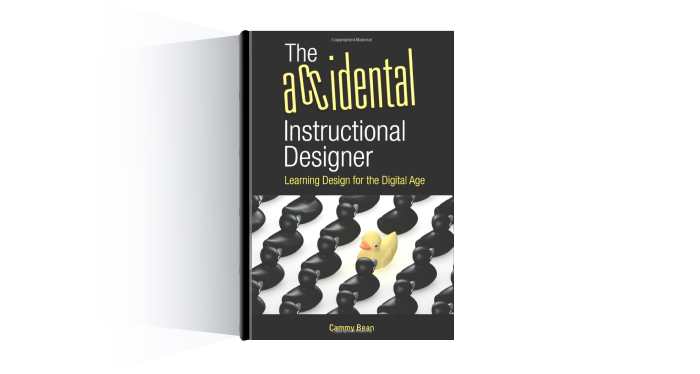
This is one of the greatest books for people who have decided to change their profession and become instructional designers quickly. It will guide you through nearly every aspect of the online learning design process and share some insights from the author’s personal experience.
In this book, you’ll discover:
- Best practices
- Real-life case studies
- The most common mistakes to avoid when designing an eLearning program
And, yes, by the end of the book, you’ll know everything you need to know to transition from an accidental instructional designer to an intentional one.
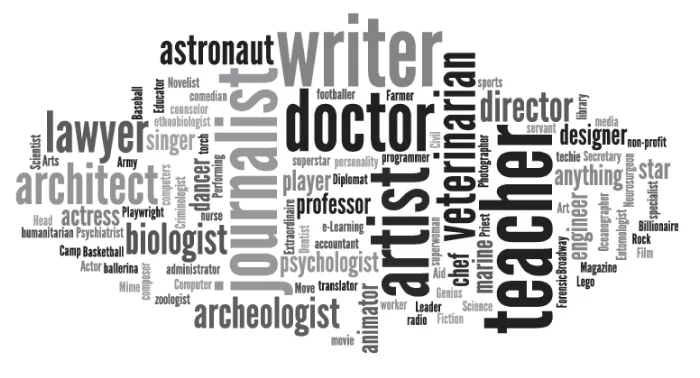
A dream job work cloud from The Accidental Instructional Designer: Learning Design for the Digital Age
Best for: people transitioning to instructional design.
3. Michael Allen’s Guide to e-Learning: Building Interactive, Fun, and Effective Learning Programs for Any Company
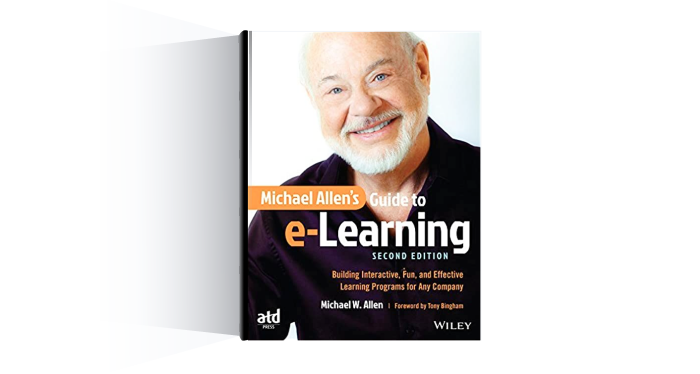
As Chandler Bing would say: “Could it BE more classical?” Michael Allen’s Guide to e-Learning is a must-read for every instructional designer. This book is a collection of invaluable insights from one of the most important people in the eLearning industry.
Here, you’ll learn:
- Mr. Allen’s three pillars of online learning
- The importance of applying them to your projects
- The learning results you can expect
Plus, Michael will take you through history, show you common pitfalls, give some tips, and take you to the path that led him and his company to success.
Best for: all eLearning professionals seeking advice from an industry pioneer.
4. Leaving ADDIE for SAM: An Agile Model for Developing the Best Learning Experiences, by Michael Allen and Richard Sites
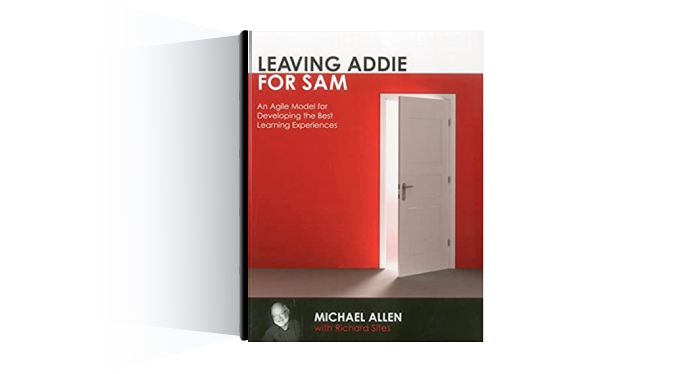
Unlike the previous books, this one is intended more for advanced instructional designers rather than beginners. Here, Mr. Allen and Mr. Sites introduce SAM – the Successive Approximation Model. While the title is fairly provocative, Michael himself reassures us that SAM is only an alternative model and if ADDIE works for you, “by all means, use it!” Still, if you’re looking for a new approach to make work more effective, you might want to take a look at SAM. In this case, this book would be just what you need.
You’ll learn:
- Every detail of the working process in SAM
- The concepts that SAM offers
- How to apply SAM to your work process
And when you finish the book, you’ll face the main question: “Will you leave ADDIE for SAM?”
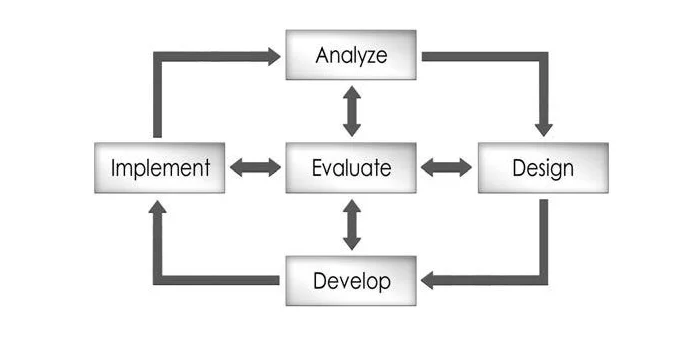
A modification of ADDIE in Leaving ADDIE for SAM: An Agile Model for Developing the Best Learning Experiences
Best for: advanced instructional designers looking to explore alternative models and innovative approaches.
5. Map It: The hands-on guide to strategic training design, by Cathy Moore
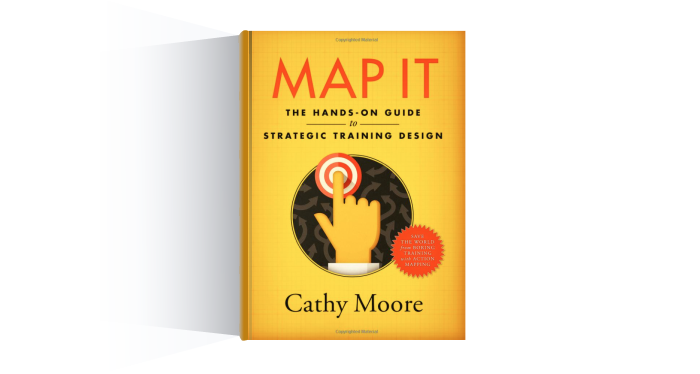
Cathy Moore’s Map it is considered to be one of the best instructional design books. It deals with a big issue many instructional designers and developers face sooner or later – online training that doesn’t help people improve their working skills. Moore gives her own solution – action mapping, an approach that allows you to shift the focus to something really important.
After reading her book, you will:
- Learn the soft and hard skills you need to use this approach
- Be able to distinguish between cases that need training and those that need something different
- Know how to make the eLearning content you design more engaging and effective
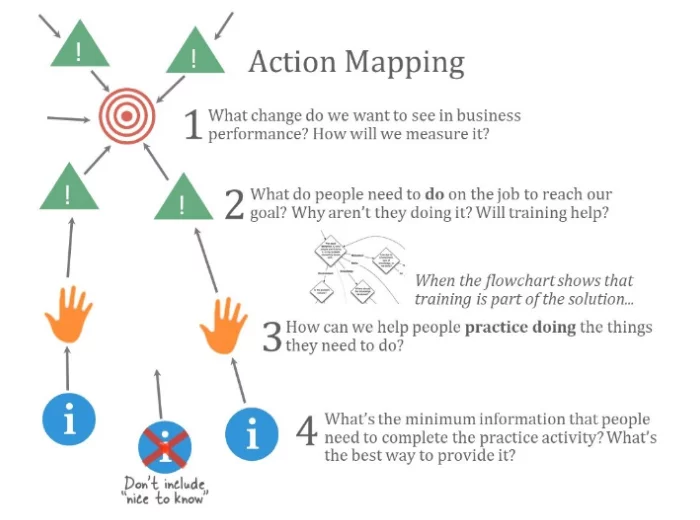
Action Mapping in Map It: The hands-on guide to strategic training design
Best for: instructional designers of any experience level who want to elevate their design process with action mapping.
6. e-Learning by Design, by William Horton
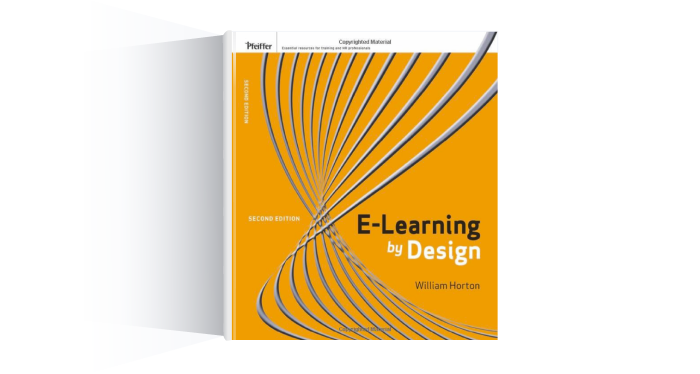
William Horton doesn’t just guide you through the process of creating eLearning content, he also offers you a range of learning activities that can be included. If you’re a beginner, this might be one of the best books to start with. Here, everything you need to know is explained and presented right from the start. Explanations are simple but not over-simplified.
After reading this book you will:
- Have a comprehensive understanding of the eLearning industry
- Discover various aspects of eLearning
- Be able to pick the right eLearning activity for every particular case
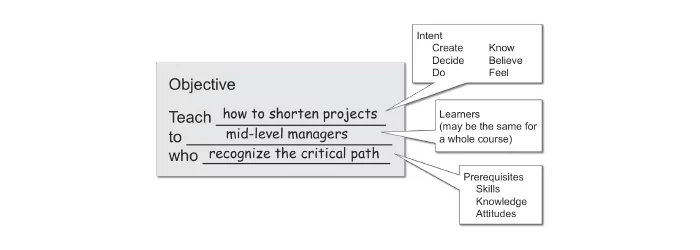
An example of a learning objective from e-Learning by Design
Best for: aspiring instructional designers seeking a comprehensive understanding of eLearning in general.
7. e-Learning and the Science of Instruction: Proven Guidelines for Consumers and Designers of Multimedia Learning, by Ruth Clark and Richard Mayer
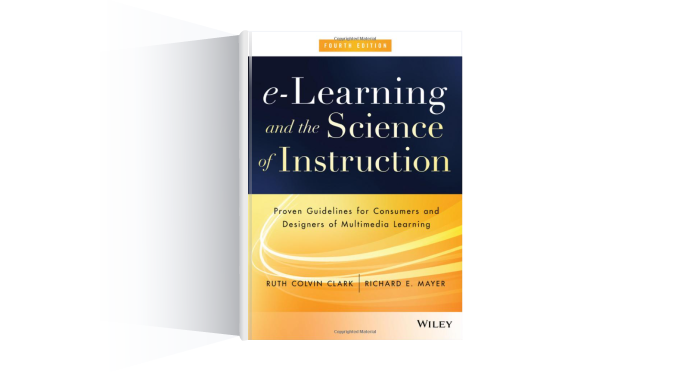
Why do we do things the way we do? Why do we make particular design decisions? These are the main questions that this book answers. Many instructional design resources often come out with their statements on what makes eLearning good and effective but don’t provide solid evidence. All the statements, claims, and conclusions in this book are based on scientific research.
Discover evidence-based practices in instructional design, exploring:
- The application of scientifically proven principles for effective eLearning
- Insights into the scientific basis for digital learning design
- Essential guidance for both beginners and seasoned professionals
Best for: both beginners and professionals who want certainty on how and why eLearning can be productive.
8. The Essentials of Instructional Design: Connecting Fundamental Principles with Process and Practice, by Abbie H. Brown and Timothy D. Green
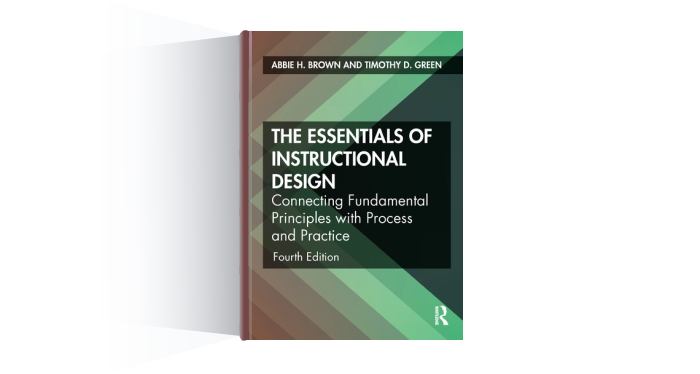
When you start a new profession, you want to know everything: what you should do, how you should do it, what you do it for, what the basic principles of your industry are, etc. Fortunately, Abbie H. Brown and Timothy D. Green wrote a book that fulfills this need. The information in their book is truly essential.
Read it to explore most aspects of instructional design, particularly:
- Learner, task, and needs analysis
- Developing goals and objectives
- Developing instructional activities
- Assessing learner achievement
- Evaluating the success of the instructional design
Besides, unlike many other ID books, it has assignments at the end of each chapter, which is a useful option when you’re studying on your own.
Best for: beginners aiming to learn the basics of instructional design.
9. The Non-Designer’s Design Book: Design and Typographic Principles for the Visual Novice, by Robin Williams
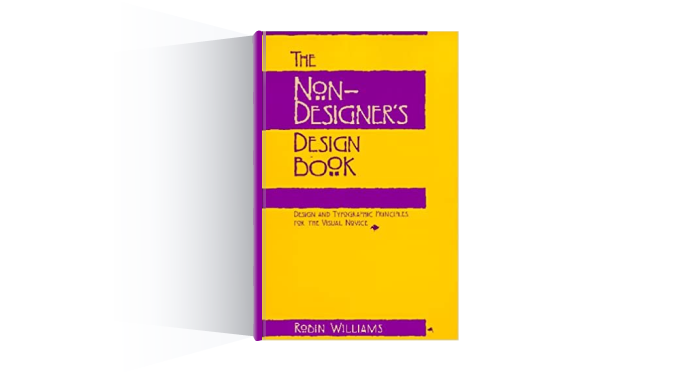
There are instructional designers who tend to ignore the importance of visual design. Some of them really don’t find it so crucial, yet others just don’t think they are capable of creating it. Well, this is a skill. And as with any other skill, it can be learned. Robin Williams’ book is all about this. It is a great introduction to the visual side of ID. Once you grasp it, you’ll see how much more effective your courses have become.
Start creating visually appealing courses by mastering the four concrete principles of design:
- Proximity
- Alignment
- Repetition
- Contrast
Best for: all instructional designers who want to start creating more visually appealing learning content.
10. Make It Stick: The Science of Successful Learning, by Peter C. Brown, Henry L. Roediger III, Mark A. McDaniel
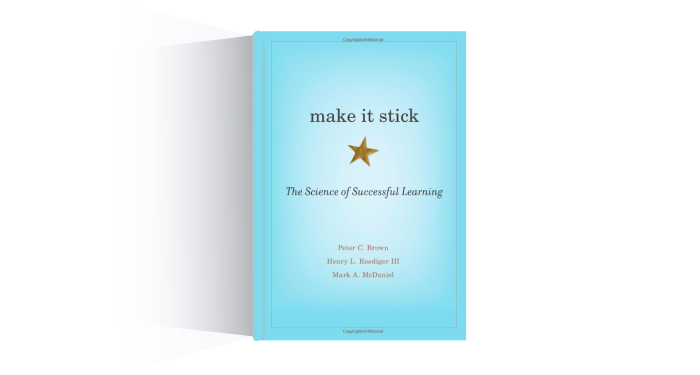
Although Make It Stick was written for teachers, professors and psychologists, it also became popular among instructional designers. Designers try their best to make the learning process more effective. And, according to common belief, this is achieved by making everything as simple as possible. The authors of Make It Stick claim the opposite: sometimes it is “desirable difficulties” that can increase effectiveness. And they prove their point by providing the results of discoveries in cognitive psychology.
After reading this book, you will:
- Have techniques to improve learning effectiveness through cognitive strategies
- Make a shift in perspective toward impactful eLearning strategies
Best for: professionals who want to make their courses more effective with techniques from cognitive psychology.
11. The Gamification of Learning and Instruction: Game-based Methods and Strategies for Training and Education, by Karl M. Kapp
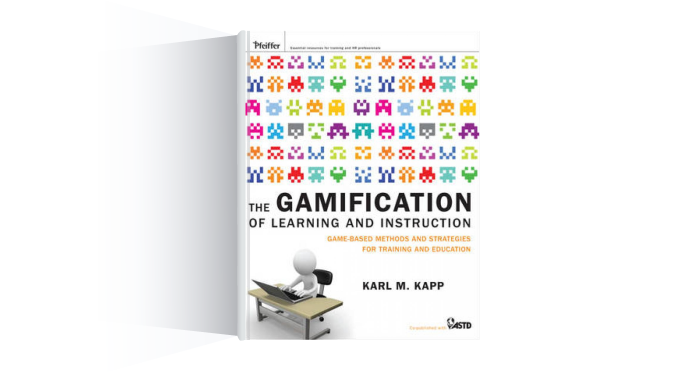
This is one of the most famous books on eLearning gamification. Summarizing research and game theory, Karl M. Kapp shares his opinion that gamification can and should be much more than just badges, levels, and points. It is about fundamentally rethinking learning design.
After reading this book you will:
- Be able to reevaluate the role and the aim of gamification in the eLearning process
- Understand the elements that provide the most positive results for learners
- Learn how to create a successful game design document
Best for: anyone interested in gamifying their learning.
Hidden Gems
If you’ve already read all the classics or wish to learn something less popular but extremely useful, check out these hidden gems.
12. The Mom Test: How to talk to customers and learn if your business is a good idea when everyone is lying to you, by Rob Fitzpatrick
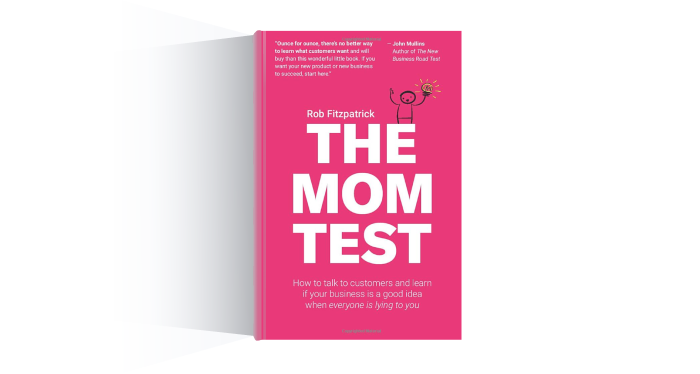
It’s useless to ask your mom’s opinion about how to succeed in your job. She loves you. You will always be her best. This lack of real evaluation is true not only for your relatives and friends but also for those you work with. Here, you will learn how to get a person talking, what questions to ask, and how to avoid one-word responses. Although this book is mostly about the work performed with clients, the rules of interview it provides can be applied to working with subject matter experts.
Here, you will learn:
- How to get a person talking
- What questions to ask
- How to avoid one-word responses
Best for: instructional designers looking to enhance their communication with SMEs.
13. Start with Why: How Great Leaders Inspire Everyone to Take Action, by Simon Sinek
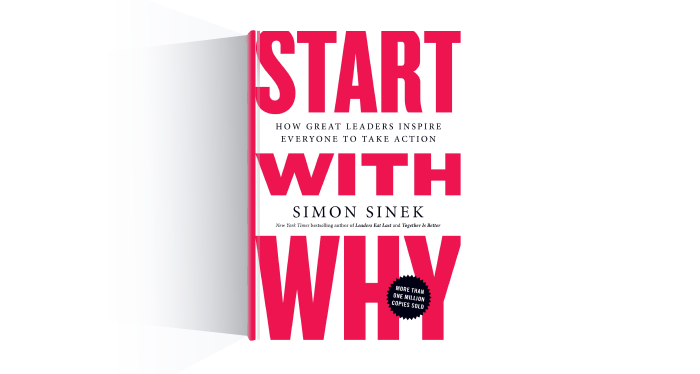
Why do I need online training? Why should I spend my time on courses? Learners need to have answers to such questions in order to be motivated and engaged. This book provides real cases of successful companies that managed to answer “why” questions and became innovative, profitable, and influential. Sinek claims that all great leaders are similar in a way and gives a framework upon which you can build anything you need – such as a learning community or an eLearning company.
After reading this book, you’ll know:
- The importance of “why” for engagement
- What learning goals and objectives you should set to inspire your learners
Best for: those who want to motivate and inspire learners more effectively.
14. The Art of Explanation: Making your Ideas, Products, and Services Easier to Understand, by Lee LeFever
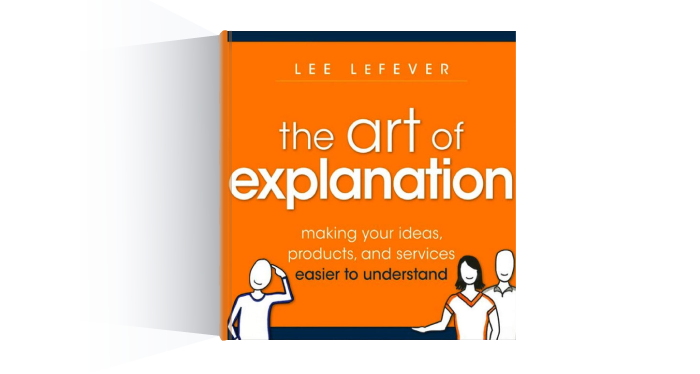
Some issues you face in instructional design are not connected with the essential “why” and “what” issues. Sometimes everything is great. Your idea is brilliant. You know the project will be extremely productive but… you can’t explain that to others. Lee LeFever’s book is all about this.
Read this book to approach effective communication from a practical perspective while exploring:
- How to craft compelling explanations for complex ideas
- Strategies for presenting material in an engaging manner
Best for: aspiring and experienced instructional designers who want to develop their explanation skills.
15. Style: Lessons in Clarity and Grace, by Joseph M. Williams and Joseph Bizup
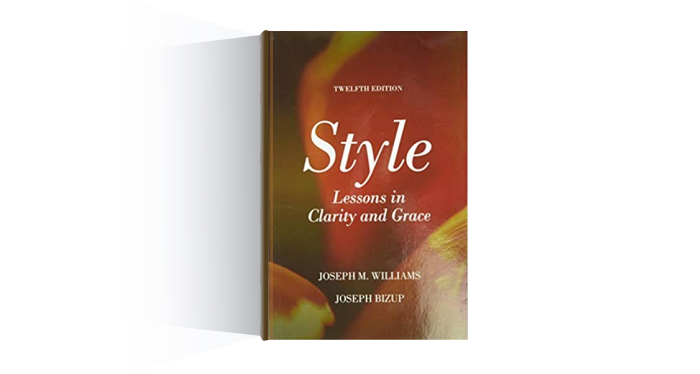
This one should have been listed in the classics, because if anything is classical here, this is it. Somehow this book remains poorly known among instructional designers despite the great importance of its subject. Language and style are the first thing employers and learners pay attention to. If you lose them there, there’s little you can do. Unlike a great many other books on writing, Messrs. Williams and Bizup’s Style is based on research in the psychology of reading and linguistics. It is regularly being updated in accordance with the changing norms of the language. All of this makes this book an up-to-date must-read for everyone.
After reading this book, you’ll know:
- How to write better course scripts in terms of style
- Which words to use to make your writing ethical
- How to set the right tone for global audiences
Best for: those who want to elevate their writing and communication skills.
16. Resonate: Present Visual Stories that Transform Audiences, by Nancy Duarte
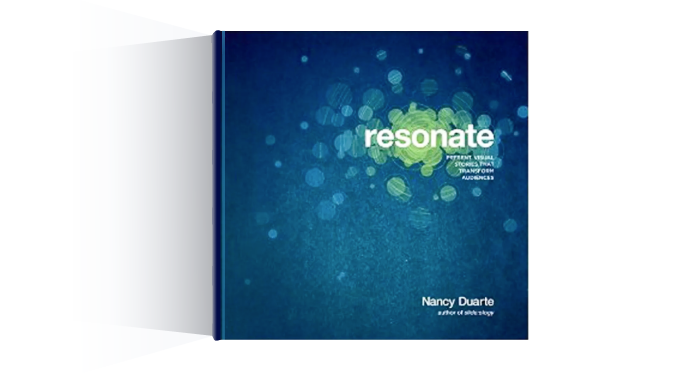
Storytelling is a skill every instructional designer must have. Nancy Duarte’s book will teach you how to:
- Establish a good structure for your story
- Find inspiration
- Choose the right kind of storytelling
- Write an engaging story that will resonate with your audience
Every piece of advice and tip Ms. Duarte gives is accompanied by an example from the real lives of such great orators as Steve Jobs, Ronald Reagan, and Martin Luther King.
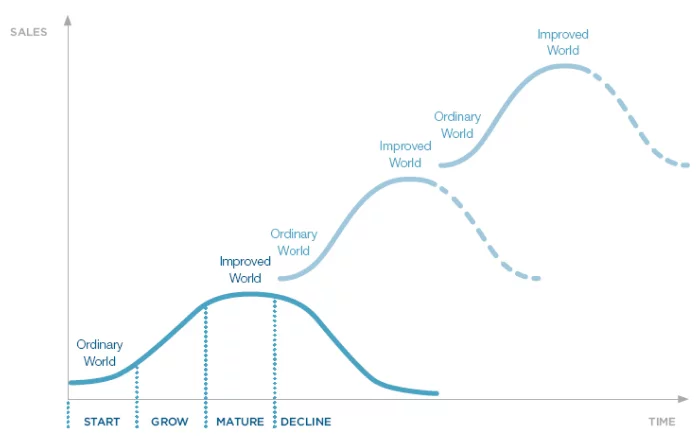
Business Transformation Path from Resonate: Present Visual Stories that Transform Audiences
Best for: professionals seeking to incorporate storytelling in their learning.
17. Creative Confidence: Unleashing the Creative Potential Within Us All, by Tom and David Kelley
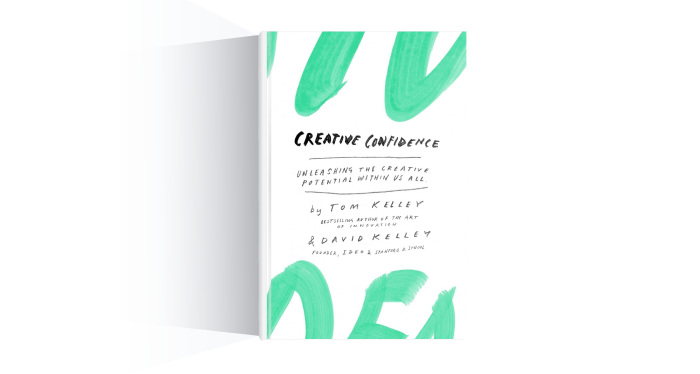
Instructional design requires a good amount of creativity. But what should you do if you don’t have that? There’s a widespread misconception that creativity belongs only to “creative types.” Tom and David Kelley prove this wrong. They claim that everyone is creative.
After reading this book, you will:
- Know principles and strategies that will allow you to use your creative potential
- Be able to develop innovative approaches to resolve issues and create unique content
Best for: instructional designers who want to innovate their learning approaches creatively.
Latest Bestsellers
The field of instructional design is evolving rapidly. New books are coming out every year and are reshaping the way that eLearning professionals create learning content and accomplish learning goals. Check out some of the latest top additions!
18. Learning Experience Design Essentials, by Cara North
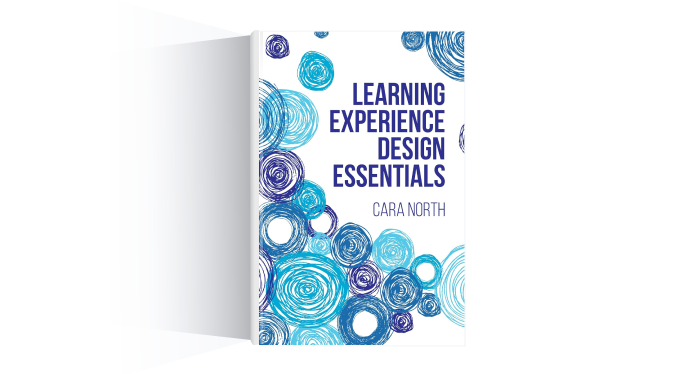
An essential guide for new instructional designers, this book emphasizes the importance of understanding learner contexts and processes. Cara North lays out a learning experience design process that encompasses task analysis, assessments, usability testing, and the crucial aspect of messaging the ‘why’ behind the learning experience.
Read this book to explore:
- Blending content and context to elevate learning experiences
- Mapping out essential skills and capabilities that define an LXD professional
- Cara North’s expert guidance on creating effective learning experiences
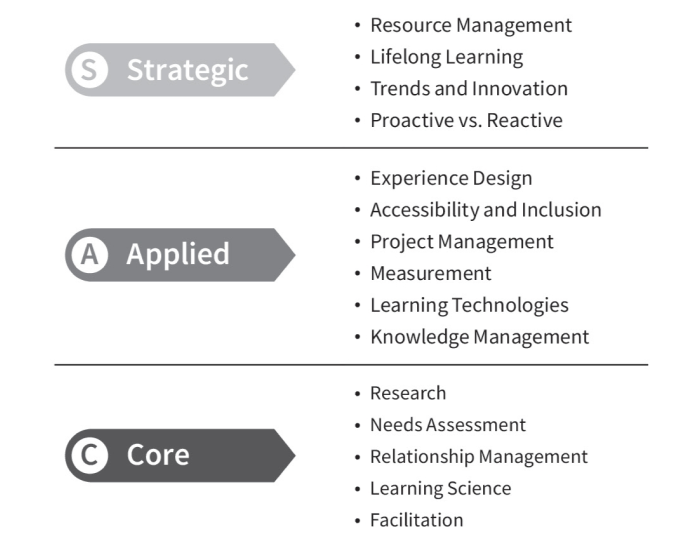
Capabilities of LXD in Learning Experience Design Essentials
Best for: beginners in instructional design.
19. Talk to the Elephant: Design Learning for Behavior Change, by Julie Dirksen
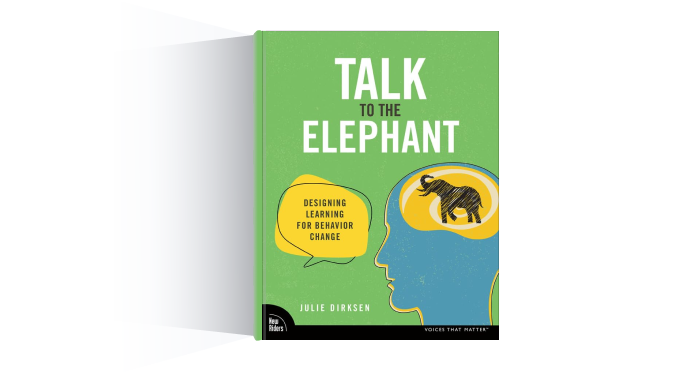
Julie Dirksen’s new book answers one of the most crucial questions instructional designers ask themselves: “What do you do when your learners know what to do but still aren’t doing it?” Spoiler alert: you change their behavior. Based on the results of the most recent research in behavioral science, this book provides you with frameworks and strategies that will help you with this challenging task.
After reading Talk to the Elephant: Design Learning for Behavior Change, you’ll be able to:
- Understand where your learners are headed in their change process and figure out their path
- Evaluate and clearly explain why the change you’re proposing matters
- Use models that explore what really motivates your learners
- Apply proven frameworks like the COM-B Model to understand challenges in changing behavior
Best for: eLearning professionals who want to understand and impact learners’ behaviors.
20. Reverse Training Design: Start at the end to revolutionize corporate learning, by Mark Mrohs
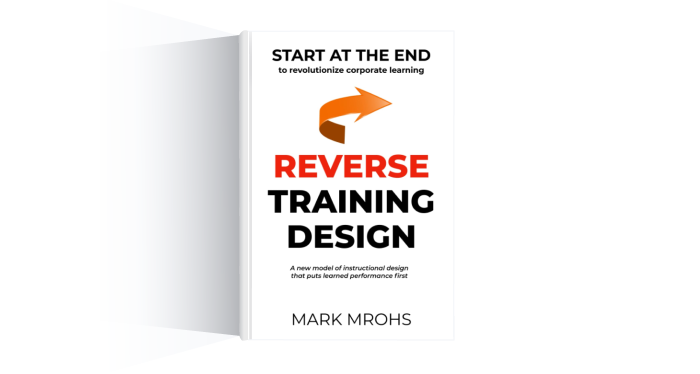
Drawing from over 40 years of international training experience and updated learning science research, Mark Mrohs presents an alternative, reverse model to training design, wherein you start with performance assessments and then design content that supports that performance. This might not be among the first books for beginners to read, but it is definitely a fresh perspective for seasoned professionals.
Read this book to:
- Understand the concept of “starting at the end” for improved program design
- Design training around learners’ cognitive processes for practical workplace application
- Utilize insights from learning science and cognitive psychology
Best for: experienced instructional designers seeking a different approach to training design.
21. What I Wish I Knew Before Becoming an Instructional Designer, by Luke Hobson
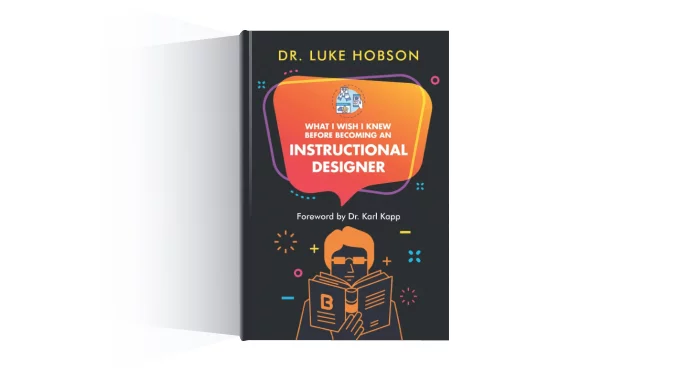
If you’re just starting out as an instructional designer, this book is definitely worth your attention. It will help you avoid common mistakes and focus your energy on what truly matters in the field, helping you get to the professional level faster.
These are some of the questions the book answers:
- What are the pros and cons of instructional design?
- How do I build a portfolio?
- How do I make connections in the field?
- How do I teach myself a new skill?
- How do I work with SMEs?
Best for: those who are just starting out in instructional design.
Conclusion
Well, now you know the best instructional design books. We hope you found at least a few of them that you can’t wait to read. Good luck!
Useful Resources
- Instructional Design: The Art of eLearning Architecture
- How to Become an Instructional Designer?
- How to Create an Instructional Design Portfolio that Makes You Shine
- Instructional Designer Salary: Proven Ways to Earn More
- Top Instructional Design Certificate Programs and Courses
- Best Instructional Design Software
